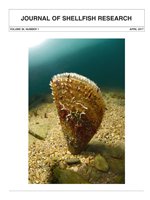The blue crab [Callinectes sapidus (Rathbun, 1896)] is a benthic decapod with a varied diet. The diet includes invertebrates and detrital material that can have relatively large amounts of chitin and cellulose, both of which can be difficult to digest for many organisms and often require the aid of specific bacteria in the gut microbiome. In this study, juvenile blue crabs were fed an optimized defined pelleted diet with a 20% replacement of wheat flour filler with either chitin, cellulose, or a 14%/6% mix of both, followed by a diet switch to the opposing ingredient. Crabs had increasing growth performance with increasing amounts of cellulose in the diet versus chitin and had an additional molt in most cases. This occurred during the initial phase and following the switch, indicating that performance can be recovered. Subsequently, cellulose and chitin digestion assays were used to show that the foregut, midgut, and hindgut were all able to significantly digest more cellulose than chitin with the majority of activity in the foregut and midgut. Implications for rearing and diet formulations as well as the role of cellulose and chitin digestion in the natural diet are discussed.
How to translate text using browser tools
1 April 2017
Growth and Enzyme Production in Blue Crabs (Callinectes sapidus) Fed Cellulose and Chitin Supplemented Diets
Andrea L. Allman,
Ernest P. Williams,
Allen R. Place
ACCESS THE FULL ARTICLE
<
Previous Article
|

Journal of Shellfish Research
Vol. 36 • No. 1
April 2017
Vol. 36 • No. 1
April 2017




